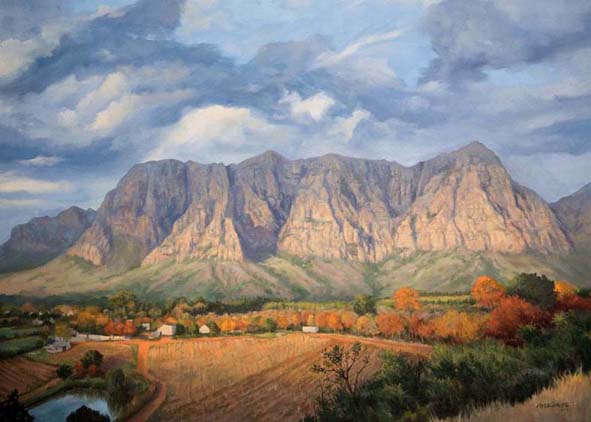The artist feels that realistic art has something in common with magic. The artist can conjure up an illusion of something that is not really there, but is responded to by a viewer as if it is there. This should compel the viewer to revisit the idea of reality and our visual experience of it. Simultaneously this may lead to a rediscovery of the exciting visual qualities of even the most ordinary things around us.
To him this is the most important aim of his work:
“If my Still-lifes can motivate someone to look more closely at a half empty glass or the fold of a tablecloth in his or her everyday surroundings and come away from that with a sense of joy or wonder, I will have contributed to the aesthetic enrichment of that person.”
He believes that in the realm of two-dimensional images, realist paintings are very different from photographs; philosophically speaking belonging to different ontologies.
“I know that the selective and psychological bias of the human eye as directed by the intelligent interpretive and emotionally-charged responses of the mind, will always ensure that even the most realistic painting will carry the individual stamp (physically and mentally) of the artist and will always be very different from anything that meets the mechanical eye of a camera.”
In the same vein he maintains that realistic painting is predominantly a mental process and to a far lesser extent a matter of technical or physical dexterity. In this sense a good realistic painting is most definitely not a mindless copy of something, but the result of a complex interaction of intelligent judgements, well-developed perceptual skills, imagination and a sensitive awareness of all technical possibilities.
In some of his landscapes or portraits he follows a more robust approach where the emphasis shifts towards mood, atmosphere or the personality of his model. Like most realist artists he is also very versatile and at times likes to experiment with a different stylistic or technical approach. In his drawings realistic images are often combined with anti-illusionistic devices and formal concerns reminiscent of both Abstract Expressionism and Pop Art. He also tends to use his drawings as a vehicle for social or political satire or for expressing his feelings about certain historical events.
The different approaches that he sometimes follows confirm his belief that the meaning of a work of art is inseparably tied up with the way in which it is made. This interdependency of subject matter and “making process” means that the content of the work should be supported or should be embodied by all the formal aspects including the choice and application of the medium.




